COSPAR ID 1958-001A Mission duration 111 days Orbit height 1,454 km Perigee 358,000 m | Harvard designation 1958 Alpha 1 SATCAT no. 00004 Launch date 31 January 1958 Apogee 2.55 million m | |
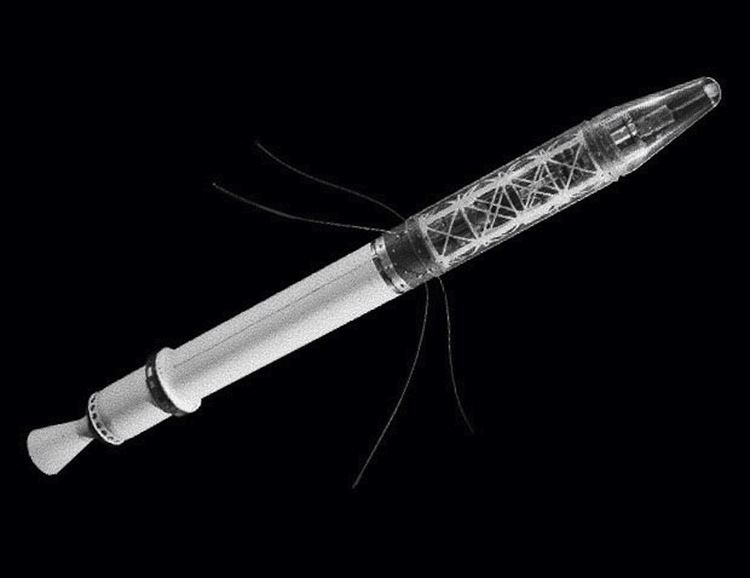 | ||
Similar | ||
The launch of explorer 1
Explorer 1 was the first satellite of the United States, launched as part of its participation in the International Geophysical Year. The mission followed the first two satellites the previous year; the Soviet Union's Sputnik 1 and 2, beginning the Cold War Space Race between the two nations.
Contents
- The launch of explorer 1
- Explorer 1 america s first satellite
- Background
- Spacecraft design
- Science payload
- Flight
- Results
- Legacy
- References
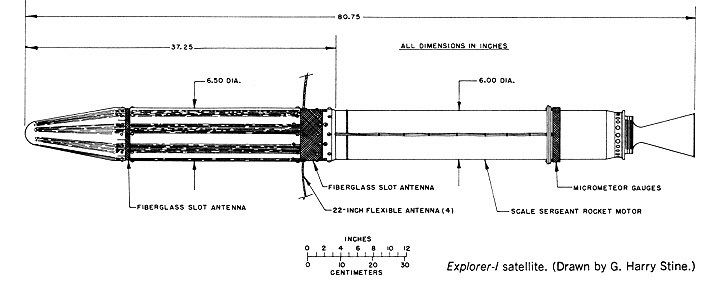
Explorer 1 was launched on January 31, 1958 at 22:48 Eastern Time (equal to February 1, 03:48 UTC) atop the first Juno booster from LC-26 at the Cape Canaveral Missile Annex, Florida. It was the first spacecraft to detect the Van Allen radiation belt, returning data until its batteries were exhausted after nearly four months. It remained in orbit until 1970, and has been followed by more than 90 scientific spacecraft in the Explorer series.
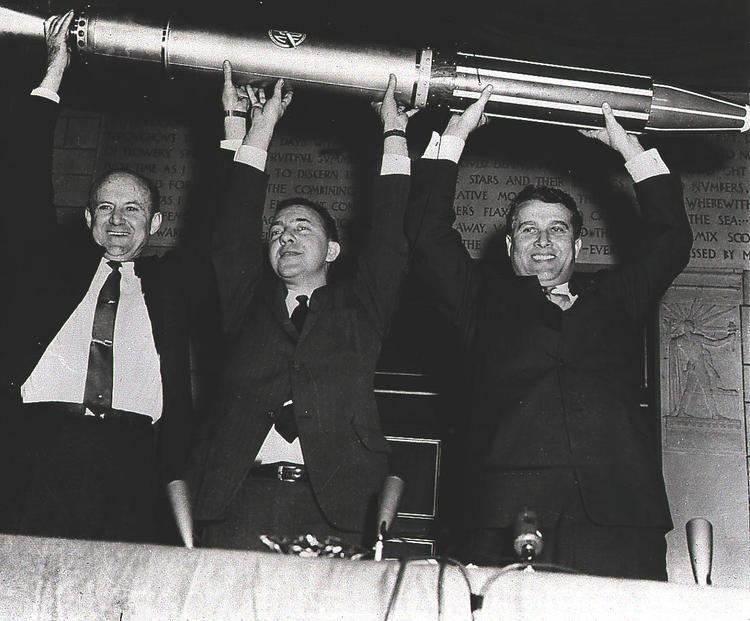
Explorer 1 was given Satellite Catalog Number 4, and the Harvard designation 1958 Alpha 1, the forerunner to the modern International Designator.
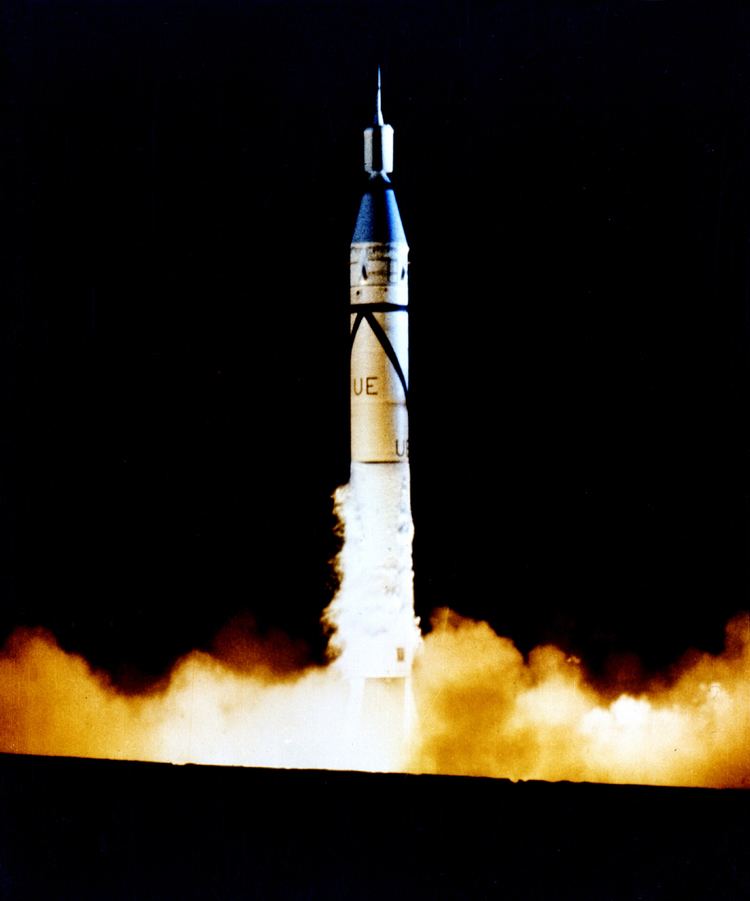
Explorer 1 america s first satellite
Background
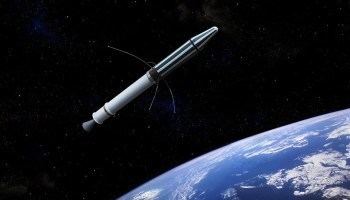
The U.S. Earth satellite program began in 1954 as a joint U.S. Army and U.S. Navy proposal, called Project Orbiter, to put a scientific satellite into orbit during the International Geophysical Year. The proposal, using a military Redstone missile, was rejected in 1955 by the Eisenhower administration in favor of the Navy's Project Vanguard, using a booster advertised as more civilian in nature. Following the launch of the Soviet satellite Sputnik 1 on October 4, 1957, the initial Project Orbiter program was revived as the Explorer program to catch up with the Soviet Union.
Explorer 1 was designed and built by the Jet Propulsion Laboratory (JPL), while a Jupiter-C rocket was modified by the Army Ballistic Missile Agency (ABMA) to accommodate a satellite payload; the resulting rocket known as the Juno I. The Jupiter-C design used for the launch had already been flight-tested in nose cone reentry tests for the Jupiter IRBM, and was modified into Juno I. Working closely together, ABMA and JPL completed the job of modifying the Jupiter-C and building Explorer 1 in 84 days. However, before work was completed, the Soviet Union launched a second satellite, Sputnik 2, on November 3, 1957. The U.S. Navy's attempt to put the first U.S. satellite into orbit failed with the launch of the Vanguard TV3 on December 6, 1957.
Spacecraft design
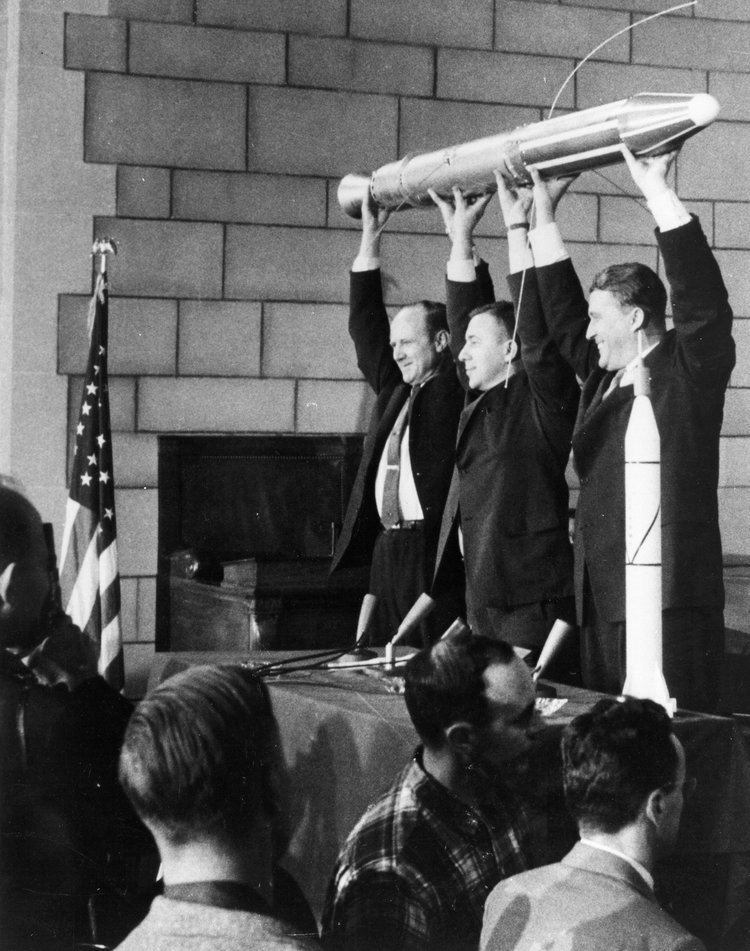
Explorer 1 was designed and built by the California Institute of Technology's JPL under the direction of Dr. William H. Pickering. It was the second satellite to carry a mission payload (Sputnik 2 was the first).
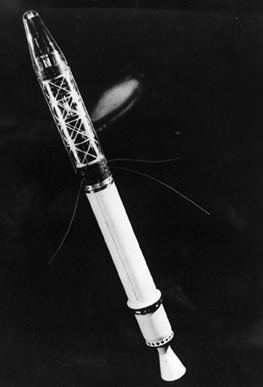
The total weight of the satellite was 13.37 kilograms (30.80 lb), of which 8.3 kg (18.3 lb) were instrumentation. In comparison, the first Soviet satellite Sputnik 1 weighed 83.6 kg (184 lb). The instrument section at the front end of the satellite and the empty scaled-down fourth-stage rocket casing orbited as a single unit, spinning around its long axis at 750 revolutions per minute.
Data from the scientific instruments was transmitted to the ground by two antennas. A 60 milliwatt transmitter fed a dipole antenna consisting of two fiberglass slot antennas in the body of the satellite operating on 108.03 MHz, and four flexible whips forming a turnstile antenna were fed by a 10 milliwatt transmitter operating on 108.00 MHz.
Because of the limited space available and the requirements for low weight, the payload instrumentation was designed and built with simplicity and high reliability in mind, using transistor electronics, consisting of both germanium and silicon devices. This was a very early time frame in the development of transistor technology, and was the first documented use of transistors in the U.S. Earth satellite program. A total of 29 transistors were used in Explorer 1, plus additional ones in the Army's micrometeorite amplifier. Electrical power was provided by mercury chemical batteries that made up approximately 40 percent of the payload weight.
The external skin of the instrument section was sandblasted stainless steel with white stripes. Several other color schemes had been tested, resulting in backup articles, models, and photographs showing different configurations, including alternate white and green striping and blue stripes alternating with copper. The final coloration was determined by studies of shadow–sunlight intervals based on firing time, trajectory, orbit, and inclination.
Science payload
The Explorer 1 payload consisted of the Iowa Cosmic Ray Instrument without a tape data recorder which was not modified in time to make it onto the spacecraft. The real-time data received on the ground was therefore very sparse and puzzling showing normal counting rates and no counts at all. The later Explorer 3 mission, which included a tape data recorder in the payload, provided the additional data for confirmation of the earlier Explorer 1 data.
The scientific instrumentation of Explorer 1 was designed and built under the direction of Dr. James Van Allen of the University of Iowa containing:
Flight
The Juno I rocket was launched January 31, 1958, putting Explorer 1 into orbit with a perigee of 358 kilometers (222 mi) and an apogee of 2,550 kilometers (1,580 mi) having a period of 114.8 minutes. At about 1:30 a.m. ET, after confirming that Explorer 1 was indeed in orbit, a news conference was held in the Great Hall at the National Academy of Sciences in Washington, DC to announce it to the world.
Mercury batteries powered the high-power transmitter for 31 days and the low-power transmitter for 105 days. Explorer 1 stopped transmission of data on May 23, 1958 when its batteries died, but remained in orbit for more than 12 years. It reentered the atmosphere over the Pacific Ocean on March 31, 1970 after more than 58,000 orbits.
Results
Explorer 1 changed rotation axis after launch. The elongated body of the spacecraft had been designed to spin about its long (least-inertia) axis but refused to do so, and instead started precessing due to energy dissipation from flexible structural elements. Later it was understood that on general grounds, the body ends up in the spin state that minimizes the kinetic rotational energy for a fixed angular momentum (this being the maximal-inertia axis). This motivated the first further development of the Eulerian theory of rigid body dynamics after nearly 200 years—to address this kind of momentum-preserving energy dissipation.
Sometimes the instrumentation would report the expected cosmic ray count (approximately 30 counts per second) but sometimes it would show a peculiar zero counts per second. The University of Iowa (under James Van Allen) noted that all of the zero counts per second reports were from an altitude of more than 2,000 kilometres (1,200 mi) over South America, while passes at 500 km (310 mi) would show the expected level of cosmic rays. Later, after Explorer 3, it was concluded that the original Geiger counter had been overwhelmed ("saturated") by strong radiation coming from a belt of charged particles trapped in space by the Earth's magnetic field. This belt of charged particles is now known as the Van Allen radiation belt. The discovery was considered to be one of the outstanding discoveries of the International Geophysical Year.
The acoustic micrometeorite detector detected 145 impacts of cosmic dust in 78,750 seconds. This calculates to an average impact rate of 8.0×10−3 impacts m−2 s−1 over the twelve-day period (29 impacts per hour per square meter).
Legacy
Explorer 1 was the first of the long-running Explorer program. A follow-up to the first mission, Explorer-1 [PRIME], was successfully launched aboard a Delta II rocket in late October, 2011. The PRIME was built using modern satellite construction techniques. The orbiting satellite was a backup, since the initial Explorer-1 PRIME, launched on March 4, 2011, failed to reach orbit due to a problem in the launch vehicle.
An identically constructed flight backup of Explorer 1 is on display in the Smithsonian Institution's National Air and Space Museum, Milestones of Flight Gallery in Washington, DC.
Launch Pad 26 was deactivated in 1963, and was designated for use as a museum in 1964, the Air Force Space and Missile Museum. Here too, a full-scale Explorer 1 is on display, but this one is a mockup. The satellite's legacy is having been the first orbital object sent to return scientific data. Its launch happened to be 100 years to the day that the SS Great Eastern was launched. This ship was much larger than anything that came before it, and it was big enough to accomplish the task of laying out the first lasting transatlantic telegraph cable. Both events served to more closely knit the world together.
